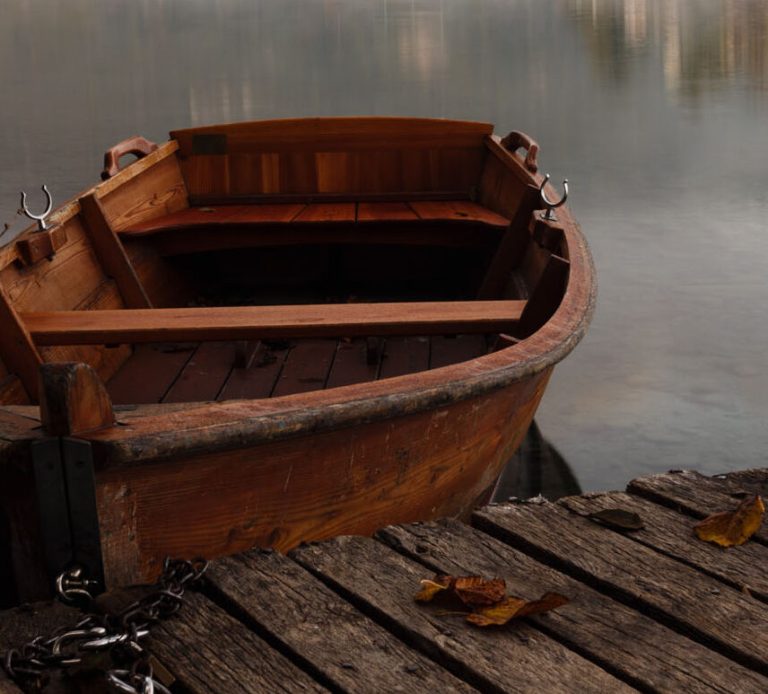5 World-Building Tips to Write a Captivating Novel
Today’s guest post is by Dario Villirilli.
In storytelling, world building is the process of constructing an (often imaginary) world in which the story takes place. The art of creating new worlds is essential for the sci-fi or fantasy writer, but it’s helpful for writers of other genres too, as it is part and parcel of crafting powerful settings.
Mastering world building, however, can be quite a challenge: for entirely fictional worlds, you’ll have to introduce lots of novel concepts and details without confusing, overwhelming, or boring the reader (whereas setting your story in our world can be slightly more straightforward).
So, if you want to learn more about it or simply improve your craftsmanship, here are five tips to create fascinating new worlds.
1. Draw inspiration from real places.
It might seem daunting to imagine a brand-new environment, but it doesn’t have to be. Our own planet has plenty of unique and awe-inspiring places that might as well belong on another planet. Take the dramatic Zhangjiajie mountains in northeast China (which inspired Avatar’s Pandora), the Peruvian city of Huacachina, built in a desert oasis, or the Mars-like landscape of the Atacama desert in Chile—aren’t they “out of this world”?
So, put your Curious Researcher’s hat on, and start Googling places that could inspire your story. Spend some time learning about the flora, fauna, and customs of people living in those areas. Keep your favorite details, and build on top of them by adding layers of new technology and magic.
Having a reference point will help you detail your world faster and better bring your setting to life. You’ll be able to create something that stretches the reader’s imagination … but still feels real.
2. Make sure every detail serves a purpose.
Many writers make the mistake of crafting a detailed world first and fitting in their characters and story later. As a result, their novels are often cursed by unnecessary exposition which dampens the story pace.
While it’s important that you create a vivid setting, world building should always add something to the reading experience and, in the best cases, support your story’s development.
Let’s take an example from Avatar again: when former Marine Jack Sully first sets foot in the colorful tropical jungle of Pandora, he’s intrigued by giant spiral-shaped flowers that retract into the ground as soon as he tries to touch them. But when all of a sudden all the flowers in front of him shrink, he’s faced with his first enemy—a terrifying animal that wants to eat him alive.
The quirkiness of the plant in itself wouldn’t have been so powerful if it wasn’t instrumental to set him in action, reveal something about the world (looks can be deceiving), and advance the plot.
When creating a world, the introduction of new, fascinating details should always serve a larger purpose than simple description. It doesn’t always have to be vital to the plot, but think carefully about whether each detail you’re adding is actually enriching the story. Not only will this make for a better reading experience, it will also make your book easier to sell (as large page-counts can sometimes scare readers away) and more appealing to literary agents.
3. Reveal your world gradually.
Another common mistake authors make is to reveal too much of the world too soon. Instead, it’s better to make your readers eager to know the answers to the mysteries of your world. You can do so by introducing your world’s features gradually, in relation to the story development.
A good example is C. S. Lewis’s novel The Lion, the Witch and the Wardrobe, and how he introduces the world of Narnia. When Lucy and her siblings play hide-and-seek, she finds a spare room with just a wardrobe. After entering it to hide, she steps backward and discovers herself in a snowy forest. Tumnus, a faun she meets, tells her that’s Narnia—a place of perpetual winter, sweet lullabies, and mysterious figures moving in the fire.
After sharing a cup of tea, Tumnus reveals that he’s kidnapping her under orders of the White Witch because she’s a human being, but out of the goodness of his heart he lets her go. When Lucy returns to the real world, the reader is left wondering: What is Narnia? Who is the White Witch, and what are her motives? And why are humans wanted?
This way of world building is more effective than an overly descriptive approach, as it keeps the reader invested in your story and eager to know more.
4. Say something about our own world.
Aside from playing with the imagination, alternative realities are ideally also a way to reflect on our present one. In fact, the ideation of new magical and technological powers have often served as a way to comment on our current society.
For example, in the classic novel Brave New World by Aldous Huxley, the citizens of World State must be happy at all times, as the stability of their society depends on it. Therefore, they are invited (read: forced) to suppress any unstable feelings by taking Soma, a happiness-inducing pill. This theoretically utopian society, where the government keeps everything running smoothly and everyone feeling happy, makes readers wonder whether happiness is possible without the contrast of other emotions and what it really means to be human.
In this regard, when crafting your world, ask yourself these questions: What power dynamics govern the world? What values are promoted? Does magic or technology create a divide between social classes? Consider how your story might offer a new lens on how we view our own culture and society.
5. Map your world in detail.
Finally, to build a great world, it’s important to “inhabit” it thoroughly, mapping it in your mind to the point that it almost feels like a real place in space and time. The mapping can be both visual and descriptive.
Visually, you can sketch out the actual geographical terrain of your world—you can do so with pen and paper, of course, or perhaps by collaborating with a book cover designer or illustrator for more professional results. It’s an extra asset you could share with your readers too, perhaps as a lead magnet and definitely in the front matter of your book.
Descriptively, you can map your world by keeping a log of your world’s history, technology, social systems, and so on. A good practice is to create a master document that you can refer to when writing, where you can list any resources you create, such as simple docs, mood boards, mind maps, etc. As you’ll spend lots of time creating your world, this will help you stay sane and your world building consistent.
The more coherently you’re able to mentally map your world, the better you’ll be able to depict it in writing.
The art of world building may be challenging, but it’s also deeply rewarding and has the power to transport the reader into your imagination. Hopefully, these tips will help you create an incredible universe of your own!
 Dario Villirilli is a writer with Reedsy, a marketplace that helps authors with everything from how to publish a book on Amazon to how to write a query letter by connecting them with the world’s best publishing professionals.
Dario Villirilli is a writer with Reedsy, a marketplace that helps authors with everything from how to publish a book on Amazon to how to write a query letter by connecting them with the world’s best publishing professionals.
Featured Photo by J. Balla Photography on Unsplash
Setting Is All about Your POV Character
Everything your character experiences has to matter, and that includes her interaction with her world. What you include and how you include it should be strategically planned. And that will help you determine what to exclude.
Words have the power to evoke imagery and emotion. The power to set a mood and reveal mind-set. The power to mirror characters’ needs and hopes and fears. Writers must harness the power of setting so that their readers will be fully immersed in a story that will linger long after they read the last pages.
Setting is perhaps the most versatile tool in a writer’s toolbox. The “right” setting, carefully chosen, can help characterize the story’s cast, drop in backstory in a meaningful way, hint at inner and outer conflict, supply tension, and make your readers feel deep emotions.
Describing setting does come with challenges. Finding the perfect balance of showing and telling that won’t slow the pace can be tricky. Pages of description may cause readers to skip ahead, but we also don’t want to provide so little that they have to work hard to visualize the scene. If mounting frustration over being unable to imagine the character’s world reaches a critical point, readers may close the book and never reopen it.
 There’s more to crafting powerful settings than just plucking out a few details and slapping them together; it’s about selecting ones that create a sensory experience, since description that offers real texture often triggers emotions and memories for readers, making them live the story emotionally through the characters.
There’s more to crafting powerful settings than just plucking out a few details and slapping them together; it’s about selecting ones that create a sensory experience, since description that offers real texture often triggers emotions and memories for readers, making them live the story emotionally through the characters.
In storytelling, our number one job as writers is to make readers care. We want to ensure that our fiction captivates them on many levels and that our characters seem like living, breathing people who continue to exist in readers’ minds long after they read “the end.”
When it comes to characters, showing rather than telling is the most powerful means of providing insight into their personalities. Letting readers see for themselves who our characters are through their behavior and interaction with their setting is much more riveting than our explaining it through pages of information.
Do you want to learn all the nuances about crafting powerful settings to bring your fiction fully to life? Then enroll in Crafting Powerful Settings! You’ll get lifetime access to all the hours of videos and handouts. Every day we writers need to keep honing our craft so we can write brilliant stories!











